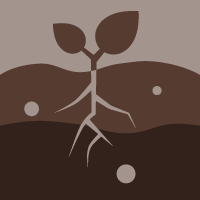Topic Menu
► Topic MenuTopic Editors

Agronomy, Soil Health and Climate Change: Challenges and Solutions
Topic Information
Dear Colleagues,
It is our pleasure to invite you to submit your latest research results to the Topic “Agronomy, Soil Health and Climate Change: Challenges and Solutions”.
Agriculture and soil are impacted from many challenges over the years because of rapid increases in the world’s population. Climate change is a common threat which has a devastating impact on agricultural production and soil health; therefore, to facilitate the transition of agriculture towards sustainable soil use adaptation strategies are needed to be developed and tested to compensate for the negative impact of climate change.
The purpose of this Topic is to publish peer-reviewed works that address climate change and agronomy issues related to soil health, new practices, and solutions to adopt in developing and developed countries and regions. We welcome papers, reviews and opinion pieces covering all related topics, including soil adaptations, primarily focusing on how agricultural management can focus and could help in tackling climate change and related to innovative and controversial technologies with the potential of finding new solutions. Soil health is an integrative property of soil that supports agricultural sustainability, these include working towards finding new research on enhancing the sustainability of agriculture, adapting agriculture to climate changes and so on. Several climate change adaptation strategies could reduce the risk of negative impacts on agriculture and soil, on which we need to focus more.
In the modern world, weather variability is a widespread occurrence and a threat to soil health. The effects of climate change go beyond just rising temperatures and heatwaves; they also include changes in rainfall, more intense and frequent storms, increased drought, and an increased risk of wildfires. Each country, area, and piece of land has its own distinct set of issues; however agriculture adaptability should be considered address the issue of climate change. These barriers must be removed. The proposed Topic will focus an open discussion on the prospects of soil health, climate change and agriculture challenges and solutions.
Prof. Dr. Sven Svenson
Prof. Dr. Shakirah Nakasagga
Prof. Dr. Indi Braden
Dr. Michael Aide
Topic Editors
Keywords
- soil health
- adaptability soil
- soil development
- sustainability of agriculture
- agricultural systems resilience
- climate change challenges
- agronomy aspects
- adapting agriculture
Participating Journals
| Journal Name | Impact Factor | CiteScore | Launched Year | First Decision (median) | APC |
|---|---|---|---|---|---|

Agronomy
|
3.7 | 5.2 | 2011 | 15.8 Days | CHF 2600 |

Climate
|
3.7 | 5.2 | 2013 | 19.7 Days | CHF 1800 |

Soil Systems
|
3.5 | 5.8 | 2017 | 27.7 Days | CHF 1800 |

Land
|
3.9 | 3.7 | 2012 | 14.8 Days | CHF 2600 |

MDPI Topics is cooperating with Preprints.org and has built a direct connection between MDPI journals and Preprints.org. Authors are encouraged to enjoy the benefits by posting a preprint at Preprints.org prior to publication:
- Immediately share your ideas ahead of publication and establish your research priority;
- Protect your idea from being stolen with this time-stamped preprint article;
- Enhance the exposure and impact of your research;
- Receive feedback from your peers in advance;
- Have it indexed in Web of Science (Preprint Citation Index), Google Scholar, Crossref, SHARE, PrePubMed, Scilit and Europe PMC.


